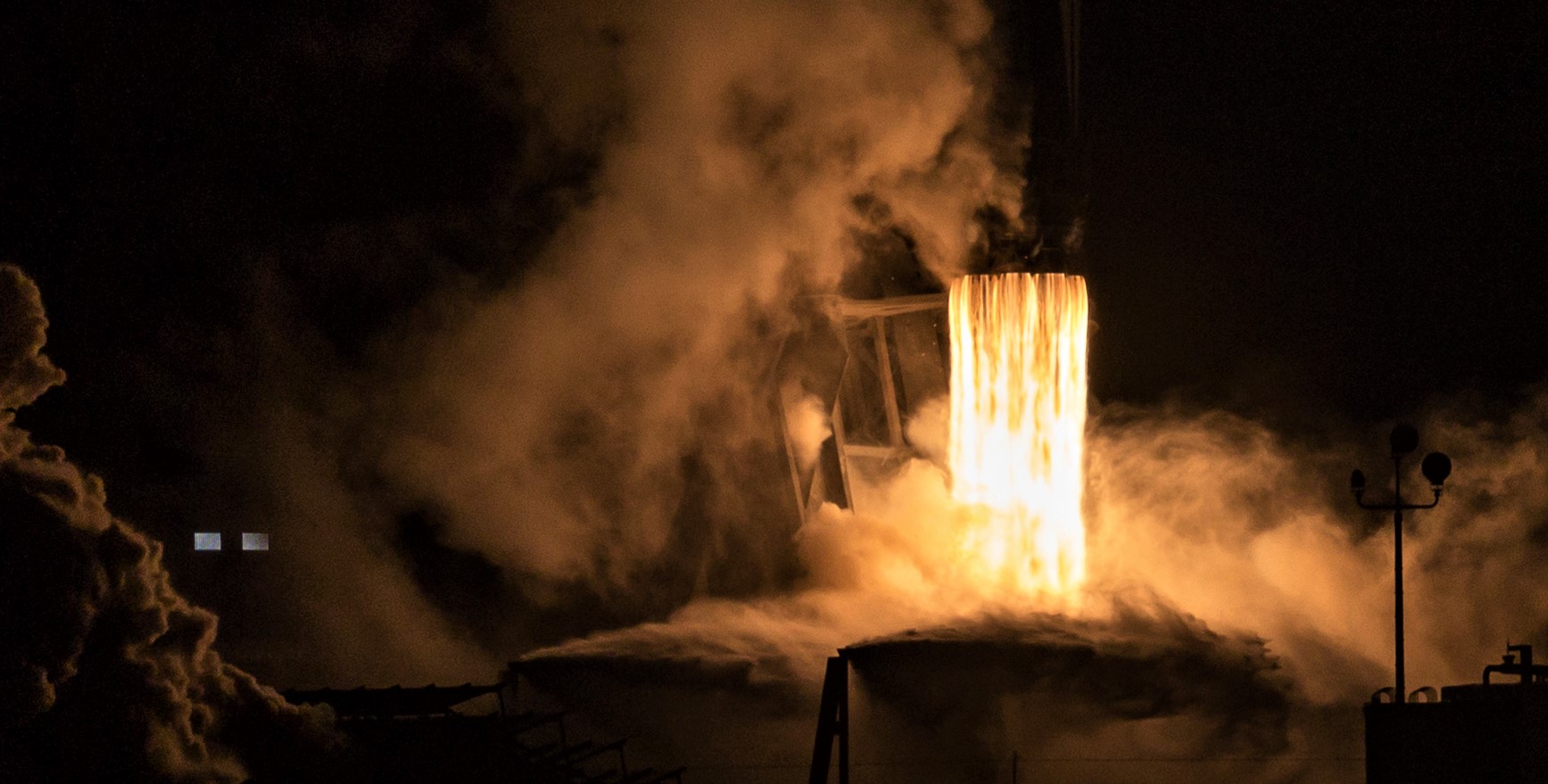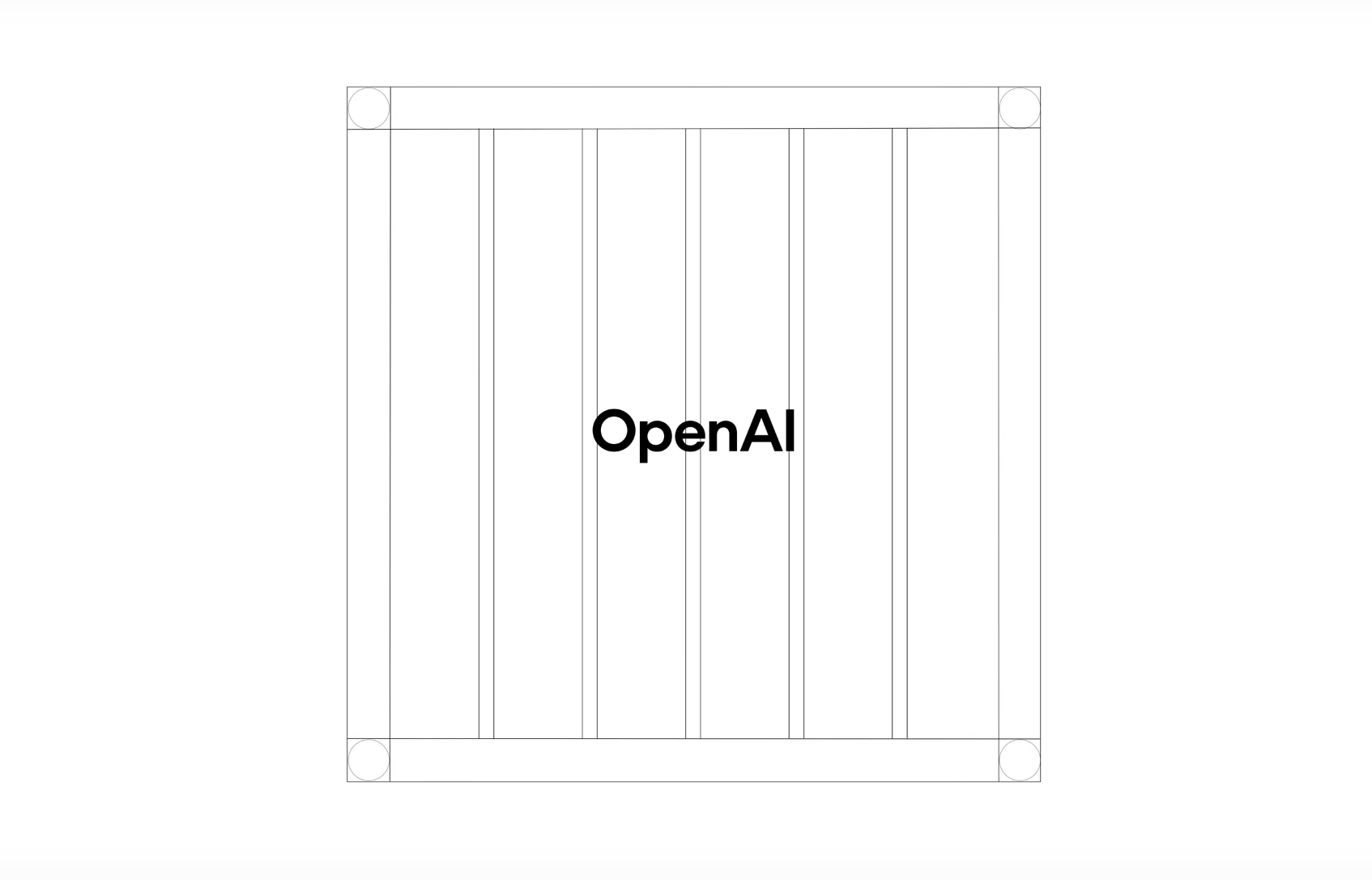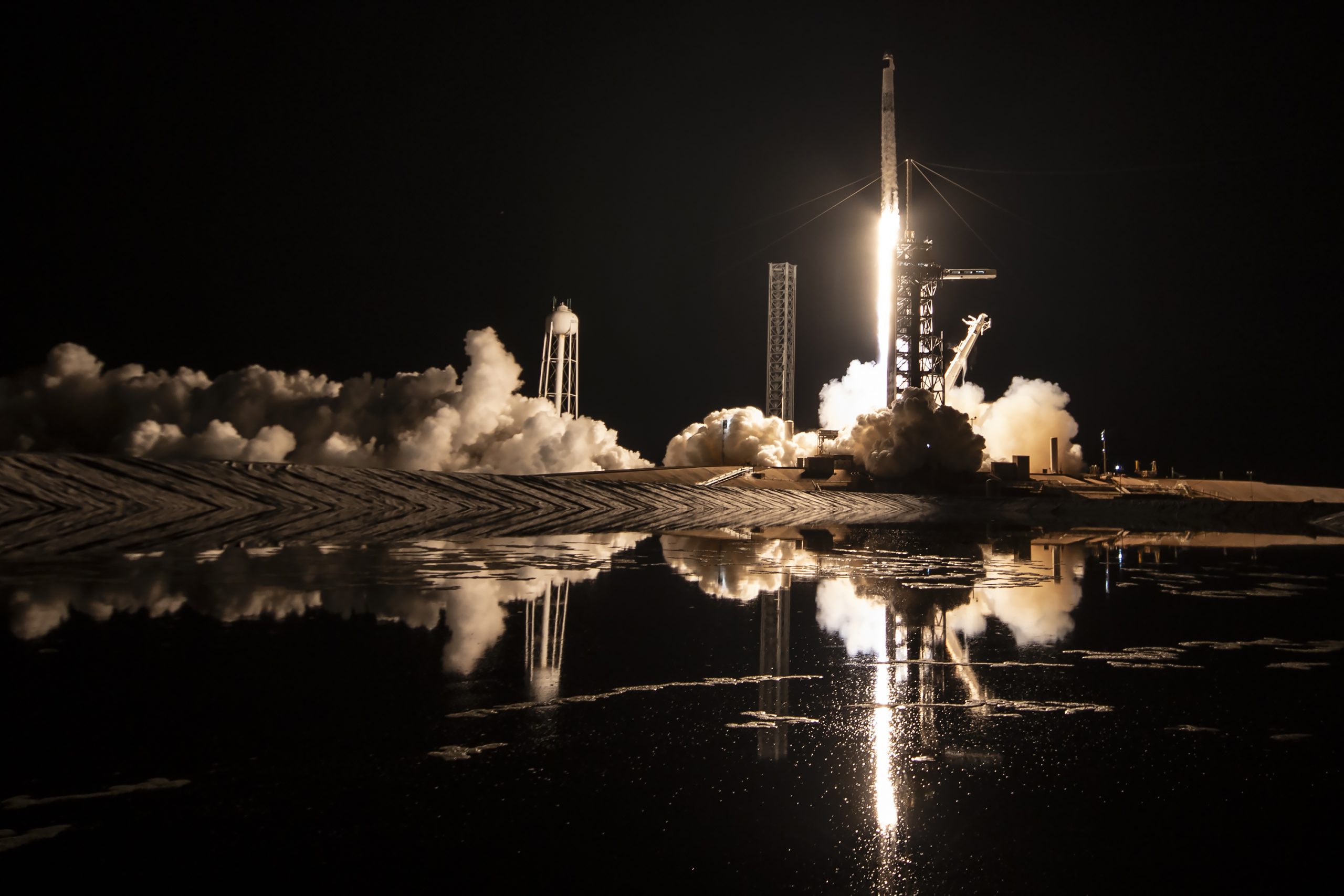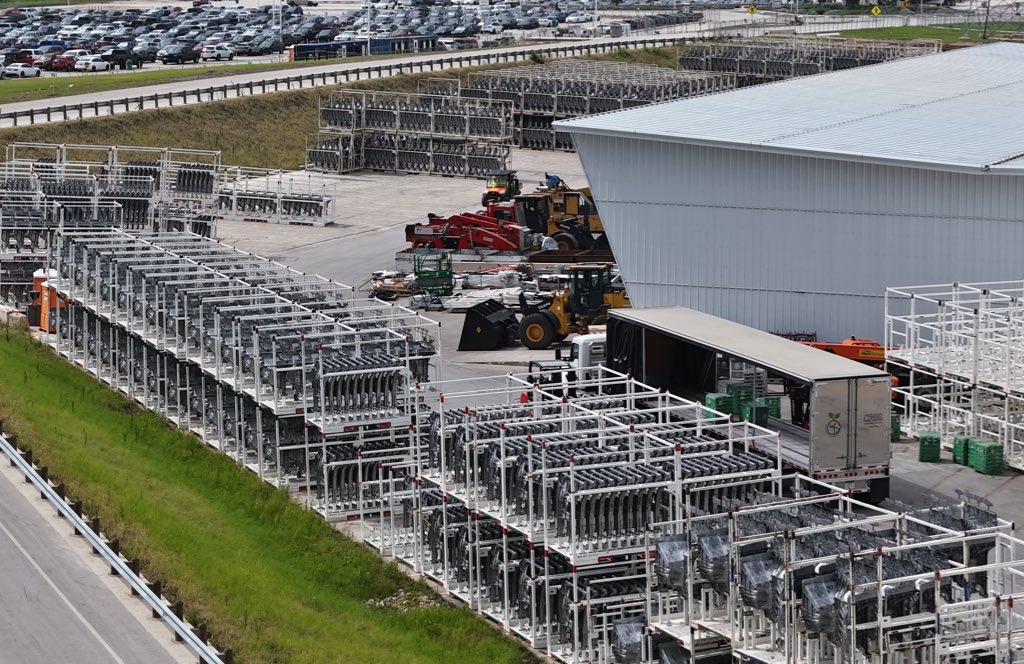

News
SpaceX static fires Falcon 9 with satellites on board for the first time in years
SpaceX has successfully completed a Falcon 9 static fire ahead of Starlink’s first dedicated launch, breaking a practice that dates back to Falcon 9’s last catastrophic failure to date.
That failure occurred in September 2016 around nine minutes before a planned Falcon 9 static fire test, completely destroying the rocket and the Amos-6 communications satellite payload and severely damaging Launch Complex 40 (LC-40). Since that fateful failure, all 42 subsequent Falcon 9 and Falcon Heavy satellite launches have been preceded by static fire tests without a payload fairing attached. This process typically adds 24-48 hours of work to launch operations, an admittedly tiny price to pay to reduce the chances of a rocket failure completely destroying valuable payloads. With Starlink v0.9, SpaceX is making different choices.
When supercool liquid oxygen ruptured a composite overwrapped pressure vessel (COPV) in Falcon 9’s upper stage, the resultant explosion and fire destroyed Falcon 9. Perhaps more importantly, the ~$200M Amos-6 satellite installed atop the rocket effectively ceased to exist, a loss that posed a serious threat to the livelihood of its owner, Spacecom. Posed with a question of whether saving a day or two of schedule was worth the potential destruction of customer payloads, both customers, SpaceX, and their insurers obviously concluded that static fires should be done without payloads aboard the rocket.
The only exceptions since Amos-6 are the launch debuts of Falcon Heavy – with a payload that was effectively disposable and SpaceX-built – and Crew Dragon DM-1, in which Falcon 9’s integration with Dragon’s launch abort system had to be tested as part of the static fire. Every other SpaceX rocket launch since September 2016 has excluded payloads during each routine pre-flight static fire.


SpaceX’s Spacecraft Emporium
Why the change of pace on this launch, then? The answer is simple: for the first time ever, SpaceX is both the sole payload/satellite stakeholder and launch provider, meaning that nearly all of the mission’s risk – and the consequences of failure – rest solely on SpaceX’s shoulders. In other words, SpaceX built and owns the Falcon 9 assigned to the mission, the 60 Starlink test satellites that make up its payload, and the launch complex supporting the mission.
Even then, if Falcon 9 were to fail during an internal SpaceX mission, customer launches could be seriously delayed by both the subsequent failure investigation failure and any potential damage to the launch complex. In short, although an internal mission does offer SpaceX some unique freedoms, it is still in the company’s best interest to treat the launch like any other, even if some customer-oriented corners are likely begging to be cut. Additionally, the loss of SpaceX’s first dedicated payload of 60 Starlink satellites could be a significant setback for the constellation, although it may be less significant than most would assume.

This is not to say that SpaceX won’t take advantage of some of the newfound freedom permitted by Starlink launches. In fact, CEO Elon Musk has stated that one of SpaceX’s 2019 Starlink missions will become the first to reuse a Falcon fairing. Additionally, SpaceX is free to do things that customers might be opposed to but that the company’s own engineers believe to be low-risk. Notably, Starlink missions will be an almost perfect opportunity for SpaceX to flight-prove reusability milestones without having to ask customers to tread outside of their comfort zones.
The sheer scale of SpaceX proposed Starlink constellation – two phases of ~4400 and ~12,000 satellites – means that the company will need all the latent launch capacity it can get over the next 5-10 years, at least until Starship/Super Heavy is able to support internal missions. Extraordinary packing density will help to minimize the number of launches needed, but the fact remains that even an absurd 120 satellites per launch (double Starlink v0.9’s 60) would still require an average of 12 launches per year to finish Starlink before 2030.


In the meantime, thoughts of a dozen or more annual Starlink launches are somewhat premature. SpaceX’s first dedicated Starlink launch (deemed Starlink v0.9) is scheduled to lift off no earlier than 10:30 pm EDT (02:30 UTC), May 15th, and is being treated as an advanced but still intermediary step between the Tintin prototypes and a finalized spacecraft design. Still, in an unprecedented step, SpaceX has built sixty Starlink satellites for the development-focused mission, in stark contrast to the six satellites (still a respectable achievement) competitor OneWeb launched in February 2019 as part of its own flight-test program.
Check out Teslarati’s Marketplace! We offer Tesla accessories, including for the Tesla Cybertruck and Tesla Model 3.
News
These Tesla, X, and xAI engineers were just poached by OpenAI
The news is the latest in an ongoing feud between Elon Musk and the Sam Altman-run firm OpenAI.

OpenAI, the xAI competitor for which Elon Musk previously served as a boardmember and helped to co-found, has reportedly poached high-level engineers from Tesla, along with others from xAI, X, and still others.
On Tuesday, Wired reported that OpenAI hired four high-level engineers from Tesla, xAI, and X, as seen in an internal Slack message sent by co-founder Greg Brockman. The engineers include Tesla Vice President of Software Engineering David Lau, X and xAI’s head of infrastructure engineering Uday Ruddarraju, and fellow xAI infrastructure engineer Mike Dalton. The hiring spree also included Angela Fan, an AI researcher from Meta.
“We’re excited to welcome these new members to our scaling team,” said Hannah Wong, an OpenAI spokesperson. “Our approach is to continue building and bringing together world-class infrastructure, research, and product teams to accelerate our mission and deliver the benefits of AI to hundreds of millions of people.”
Lau has been in his position as Tesla’s VP of Software Engineering since 2017, after previously working for the company’s firmware, platforms, and system integration divisions.
“It has become incredibly clear to me that accelerating progress towards safe, well-aligned artificial general intelligence is the most rewarding mission I could imagine for the next chapter of my career,” Lau said in a statement to Wired.
🚨Optimistic projections point to xAI possibly attaining profitability by 2027, according to Bloomberg's sources.
If accurate, this would be quite a feat for xAI. OpenAI, its biggest rival, is still looking at 2029 as the year it could become cash flow positive.💰 https://t.co/pE5Z9daez8
— TESLARATI (@Teslarati) June 18, 2025
READ MORE ON OPENAI: Elon Musk’s OpenAI lawsuit clears hurdle as trial looms
At xAI, Ruddarraju and Dalton both played a large role in developing the Colossus supercomputer, which is comprised of over 200,000 GPUs. One of the major ongoing projects at OpenAI is the company’s Stargate program,
“Infrastructure is where research meets reality, and OpenAI has already demonstrated this successfully,” Ruddarraju told Wired in another statement. “Stargate, in particular, is an infrastructure moonshot that perfectly matches the ambitious, systems-level challenges I love taking on.”
Elon Musk is currently in the process of suing OpenAI for shifting toward a for-profit model, as well as for accepting an investment of billions of dollars from Microsoft. OpenAI retaliated with a counterlawsuit, in which it alleges that Musk is interfering with the company’s business and engaging in unfair competition practices.
Elon Musk confirms Grok 4 launch on July 9 with livestream event
News
SpaceX share sale expected to back $400 billion valuation
The new SpaceX valuation would represent yet another record-high as far as privately-held companies in the U.S. go.

A new report this week suggests that Elon Musk-led rocket company SpaceX is considering an insider share sale that would value the company at $400 billion.
SpaceX is set to launch a primary fundraising round and sell a small number of new shares to investors, according to the report from Bloomberg, which cited people familiar with the matter who asked to remain anonymous due to the information not yet being public. Additionally, the company would sell shares from employees and early investors in a follow-up round, while the primary round would determine the price for the secondary round.
The valuation would represent the largest in history from a privately-owned company in the U.S., surpassing SpaceX’s previous record of $350 billion after a share buyback in December. Rivaling company valuations include ByteDance, the parent company of TikTok, as well as OpenAI.
Bloomberg went on to say that a SpaceX representative didn’t respond to a request for comment at the time of publishing. The publication also notes that the details of such a deal could still change, especially depending on interest from the insider sellers and share buyers.
Axiom’s Ax-4 astronauts arriving to the ISS! https://t.co/WQtTODaYfj
— TESLARATI (@Teslarati) June 26, 2025
READ MORE ON SPACEX: SpaceX to decommission Dragon spacecraft in response to Pres. Trump war of words with Elon Musk
SpaceX’s valuation comes from a few different key factors, especially including the continued expansion of the company’s Starlink satellite internet company. According to the report, Starlink accounts for over half of the company’s yearly revenue. Meanwhile, the company produced its 10 millionth Starlink kit last month.
The company also continues to develop its Starship reusable rocket program, despite the company experiencing an explosion of the rocket on the test stand in Texas last month.
The company has also launched payloads for a number of companies and government contracts. In recent weeks, SpaceX launched Axiom’s Ax-4 mission, sending four astronauts to the International Space Station (ISS) for a 14-day stay to work on around 60 scientific experiments. The mission was launched using the SpaceX Falcon 9 rocket and a new Crew Dragon capsule, while the research is expected to span a range of fields including biology, material and physical sciences, and demonstrations of specialized technology.
News
Tesla Giga Texas continues to pile up with Cybercab castings
Tesla sure is gathering a lot of Cybercab components around the Giga Texas complex.

Tesla may be extremely tight-lipped about the new affordable models that it was expected to start producing in the first half of the year, but the company sure is gathering a lot of Cybercab castings around the Giga Texas complex. This is, at least, as per recent images taken of the facility.
Cybercab castings galore
As per longtime drone operator Joe Tegtmeyer, who has been chronicling the developments around the Giga Texas complex for several years now, the electric vehicle maker seems to be gathering hundreds of Cybercab castings around the factory.
Based on observations from industry watchers, the drone operator appears to have captured images of about 180 front and 180 rear Cybercab castings in his recent photos.
Considering the number of castings that were spotted around Giga Texas, it would appear that Tesla may indeed be preparing for the vehicle’s start of trial production sometime later this year. Interestingly enough, large numbers of Cybercab castings have been spotted around the Giga Texas complex in the past few months.
Cybercab production
The Cybercab is expected to be Tesla’s first vehicle that will adopt the company’s “unboxed” process. As per Tesla’s previous update letters, volume production of the Cybercab should start in 2026. So far, prototypes of the Cybercab have been spotted testing around Giga Texas, and expectations are high that the vehicle’s initial trial production should start this year.
With the start of Tesla’s dedicated Robotaxi service around Austin, it might only be a matter of time before the Cybercab starts being tested on public roads as well. When this happens, it would be very difficult to deny the fact that Tesla really does have a safe, working autonomous driving system, and it has the perfect vehicle for it, too.
-

 Elon Musk1 week ago
Elon Musk1 week agoTesla investors will be shocked by Jim Cramer’s latest assessment
-

 News2 weeks ago
News2 weeks agoTesla Robotaxi’s biggest challenge seems to be this one thing
-

 Elon Musk1 day ago
Elon Musk1 day agoElon Musk confirms Grok 4 launch on July 9 with livestream event
-

 News2 weeks ago
News2 weeks agoWatch the first true Tesla Robotaxi intervention by safety monitor
-

 News5 days ago
News5 days agoTesla Model 3 ranks as the safest new car in Europe for 2025, per Euro NCAP tests
-

 Elon Musk2 weeks ago
Elon Musk2 weeks agoA Tesla just delivered itself to a customer autonomously, Elon Musk confirms
-

 Elon Musk2 weeks ago
Elon Musk2 weeks agoxAI welcomes Memphis pollution results, environmental groups push back
-

 Elon Musk2 weeks ago
Elon Musk2 weeks agoElon Musk confirms Tesla Optimus V3 already uses Grok voice AI

















